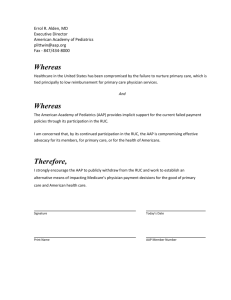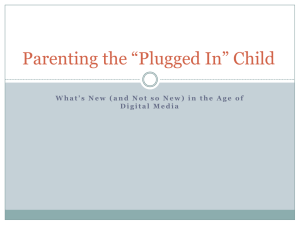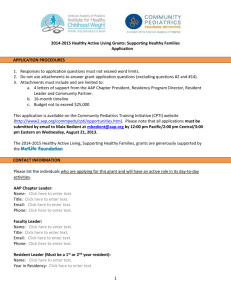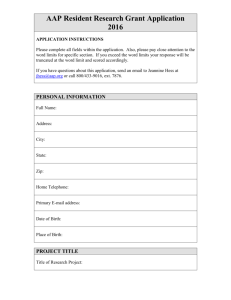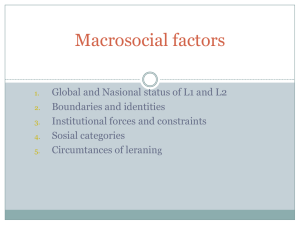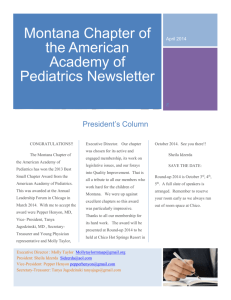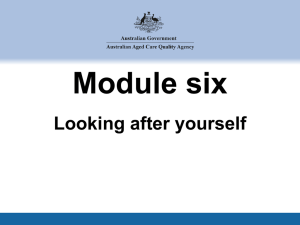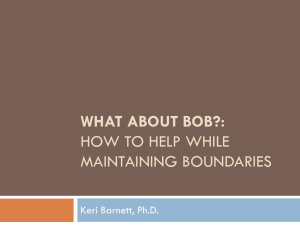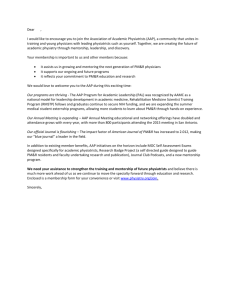Parenting the Plugged-In Child Wednesday November 6
advertisement
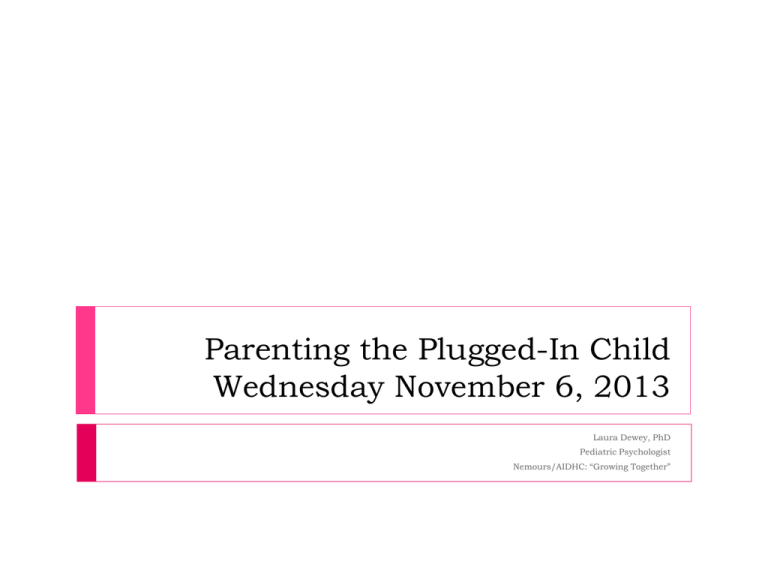
Parenting the Plugged-In Child Wednesday November 6, 2013 Laura Dewey, PhD Pediatric Psychologist Nemours/AIDHC: “Growing Together” Ursuline Dallas Graduation Goals of Presentation Relevant Research Tips for Setting Boundaries Discussion Relevant Research Prevalence of Media Use Kaiser Family Foundation study in 2008-2009 Over 2000 3rd to 12th grade students completed a survey and over 700 students tracked media use for a week Results for 8-18 year olds: For 8-18 year olds, 7:38 was the average time spent watching TV, listening to music, playing video games, using the computer, watching movies (in the theater), and using print media Did not distinguish multitasking, educational use, phone/texting 76% own an mp3 player 66% own a cell phone 29% own a laptop (by their report) 33% have internet access in the bedroom Rideout V. (2010). Generation M2: Media in theLives of 8- to 18-Year-Olds. Kaiser Family Foundation: Menlo Park, CA. Guidelines from the AAP O’Keefe, G.W. & Clarke-Pearson, K. (2011). Clinical Report: The impact of social media on children, adolescents and families. Pediatrics, 127 (4), 800-804. American Academy of Pediatrics Council on Communications and Media (2011). Policy statement: children, adolescents, obesity and the media. Pediatrics, 128(1), 201-208. Benefits of Media Use Socialization and Communication Supplement learning Homework and group projects Transfers to real world expectations Increased ways to access information quickly and efficiently Preparation for a digital world Connect with friends Broaden community (e.g., involvement in charities) Enhance creative thinking Foster sense of identity Exposure to diverse ideas Typing skills, multitasking, innovative thinking Increase access to information Risks of Media Use Risk for obesity and sleep disturbance (AAP guidelines) Excess use associated with depression/emotional problems Exacerbated with violent, interactive videogames May interfere with developmentally critical activities Based on self-report on a general “wellbeing” questionnaire Violent content associated with risk for aggression in children Increased sedentary activity Unhealthy eating (advertisements, increased snacking) Late-night screen time School work, sports, social skills May interfere with family life Boundaries Guidelines from the AAP Infants < 2 years: 0 hours of screen time/day Children > 2 years: <2 hours of screen time/day Avoid TV sets and internet connections in bedrooms Co-view with children Limit nighttime screen media use And enforce a healthy nighttime routine Remember, screen time =non-educational! Why are Boundaries Important? Would you let your child drive a car without instructions and limits? Promotes the benefits of media use while encouraging well-rounded development Allows you and your child to have rules established ahead of time Consider the temperament of your child! Every child and family is different No “one size fits all” approach Anticipate your own child’s particular difficulties Ways to Set Boundaries Be knowledgeable about social media! Ask your child to teach you, get a facebook account, explore current sites, etc. Know the legal rules Facebook’s age limit is 13 years (see “Terms”) Twitter does not have an age limit Youtube’s might be 13? Difficult to find on the website Youtube: “Safety link” has a brief (1:46) video that highlights privacy, bullying, and internet “street smarts” Helpful Websites http://safetynet.aap.org/ www.netlingo.com, www.noslang.com www.netsmartz.org, www.parentfurther.com Netsmartz has information geared to parents, children, and teens Teaching Responsible Media Use Model balance to your children Abide by the family rules that are set Create opportunities for physical, social, and family activities Encourage “good citizenship” Respect facebook’s 13-year-old age limit Concerns with Setting Boundaries Lenient… Won’t my child be ostracized? Won’t my child get mad at me? Won’t my child just find a way around my limits? Harsh… Shouldn’t I monitor everything? Shouldn’t I protect my child more? Won’t something bad happen? These are the same concerns that come with any parenting decision! Decide what works for your child and your family. Trust your gut. Tips for Setting Boundaries Approach the topic in a matter-of-fact manner Set clear rules ahead of time – and when you might intervene Establish that social media is a privilege, not a right Make sure all caregivers are on the same page Remind them that decisions they make are permanent in the digital media world *provide relevant examples Review both positives and negatives about digital media use Establish a balance with other activities Remember… No one has all the answers Establish rules ahead of time “stalking” versus “monitoring” Know your own child and what has worked/been problematic in the past Use resources to remain knowledgeable Connect with other parents/sources of support Warning Signs Decreased grades Increased withdrawal/moodiness Changes in amount of digital media use (e.g., too much AND too little) Impact on social or family life Discussion Thank you!

